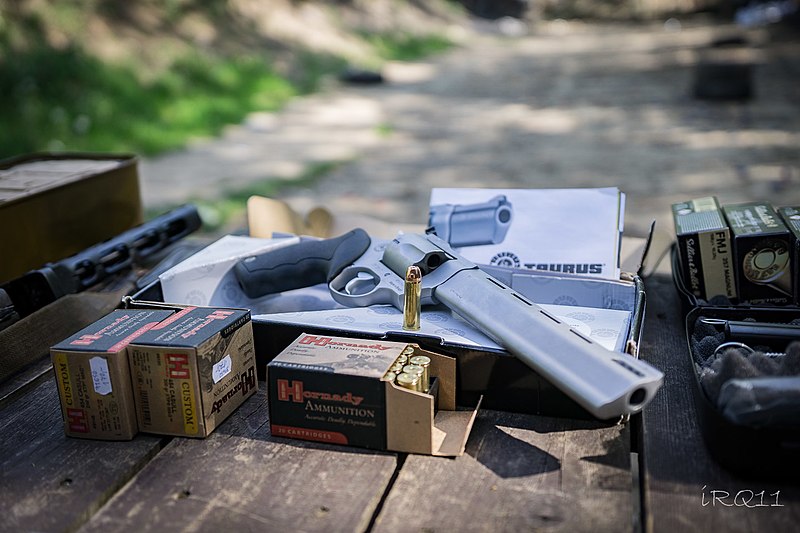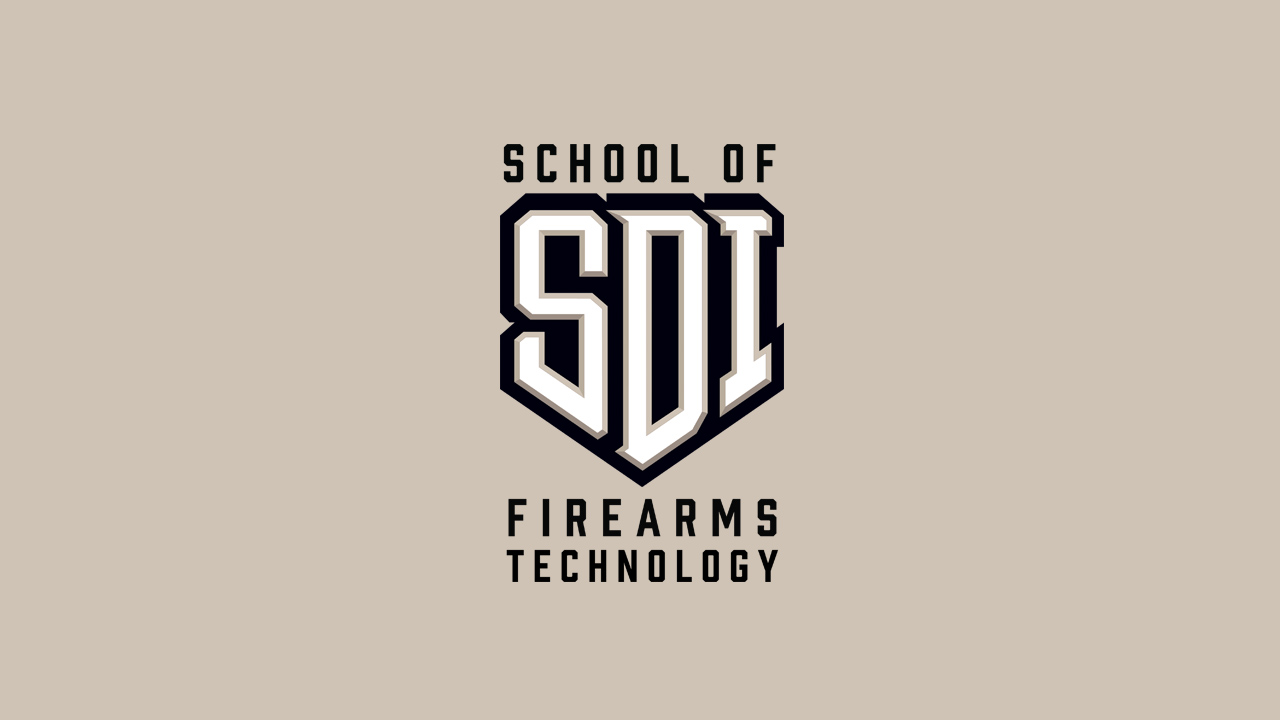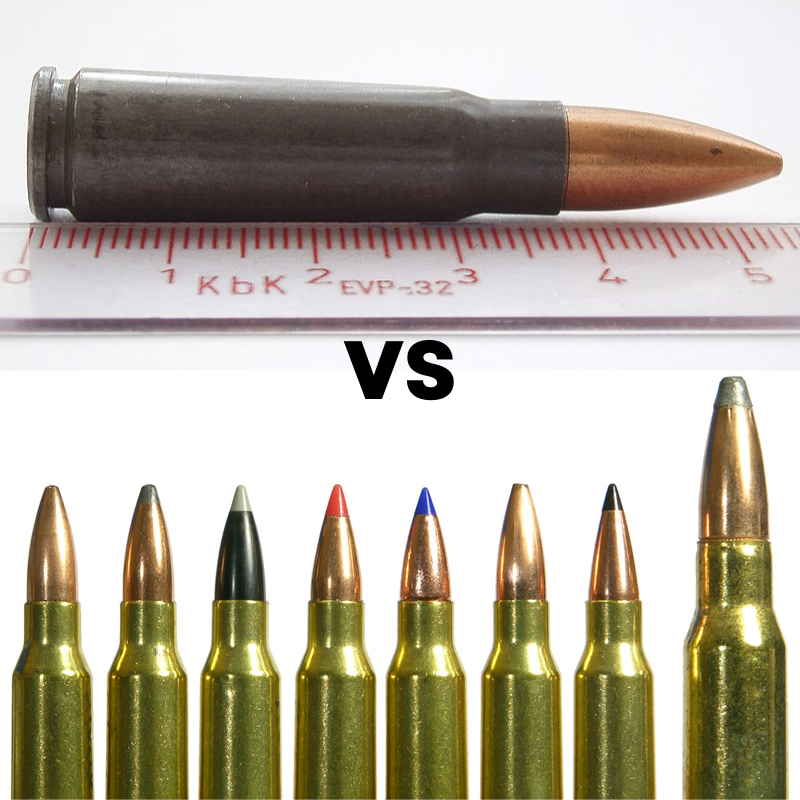
The bottom image is courtesy of The38superdude
It’s another iteration of the classic West vs East showdown. Tacos vs Pizza. Greeks vs Persians. And last but not least, AK vs AR. There are a ton of differences between these platforms. But one of the biggest is the caliber that they’re chambered in. In this post, we’ll look at the differences between 7.62 x 39 vs 5.56 and 223.
7.62 x39 vs 5.56 / 223: What’s the Difference?
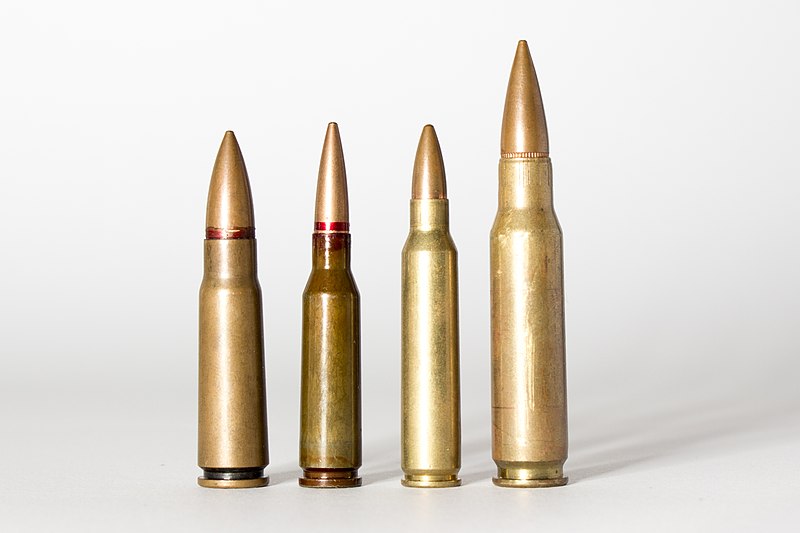
7.62 x 39 (far left) and 5.56 (center right) size comparison. Photo courtesy of Grasyl.
When it comes to 7.62 x 39 and 5.56, the two rounds actually have a bit in common. For one, they’re two of the most mass-produced firearm cartridges in the history of the world.
One last thing to note: in this post, we’ll refer to 5.56 and 223 by either name. In reality, they’re not exactly the same cartridge. While 5.56 was designed for military use, 223 is a civilian round. As a result, 5.56 rounds generate higher pressures when fired. This means that you can shoot a 223 round out of a gun chambered in 5.56, but not vice-versa.
5.56 / 223: Performance
The Western world’s answer to the Soviet intermediate cartridge came in the form of the 5.56×45. Believe it or not, intermediate rifle cartridges were one of the places where NATO militaries lagged behind their Soviet counterparts. In the aftermath of the Second World War, the US and its allies continued to follow a big-bullet battle rifle philosophy. As a result, they spent most of the 1940s and 1950s with the 7.62×51 (aka 7.62 NATO) as their primary cartridge. This changed in 1957 when Remington designed the 223 cartridge for the US Army. After further testing, the military refined the 223 into the 5.56 that we know today.
|
Bullet Weight |
Usually 55 grains |
|
Muzzle Velocity |
3130 fps |
|
Max Effective Range |
500 yards |
|
Max Pressure |
55,000 PSI |
|
Felt Recoil |
About 5 ft-lbs |
7.62 x 39: Performance
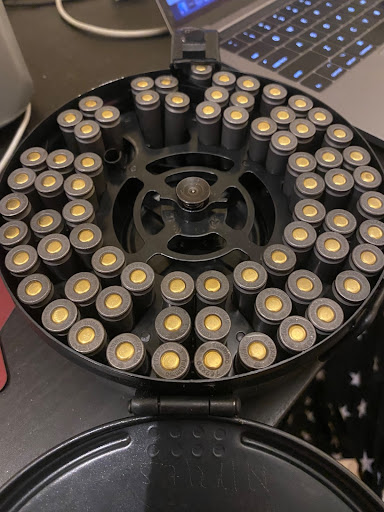
7.62 x39 in an AK-47 drum magazine
First up, we have the 7.62 x 39 cartridge. The round actually traces its origins back to 1943, at a time during the Second World War when Allied victory was becoming increasingly obvious and some Soviet weapons designers began looking towards the future. Designers drafted up plans for more than 300 different cartridges before eventually settling on the 7.62 x 39. The Soviet SKS was the first rifle designed to fire the 7.62 x 39, but it was quickly replaced by the ubiquitous AK-47.
|
Bullet Weight |
122 or 123 grains |
|
Muzzle Velocity |
2300 fps |
|
Max Effective Range |
300-400 yards |
|
Max Pressure |
45,000 PSI |
|
Felt Recoil |
About 8.5 ft-lbs |
5.56 vs 7.62 x39: Which is Better?
Ultimately, it’s difficult to say that one of these rounds is inherently better than the other. It really depends on the application. For instance, the 5.56’s smaller profile makes it better at penetration, thus more useful against heavily armored troops. However, the 7.62 x 39 is a heavier bullet that can impart more force on its target. As a result, the cartridge has found a niche among hunters stalking prey like deer and hogs.
Learn More About Firearms Technology at SDI
Do you love learning all the nitty-gritty details about firearms and ammunition? At SDI, you can take your firearm knowledge to the next level. To learn more about topics like 7.62 x 39 vs 5.56, firearm maintenance, and more, check out the programs we offer here.

